Recap OHP Annual Meeting December 2023
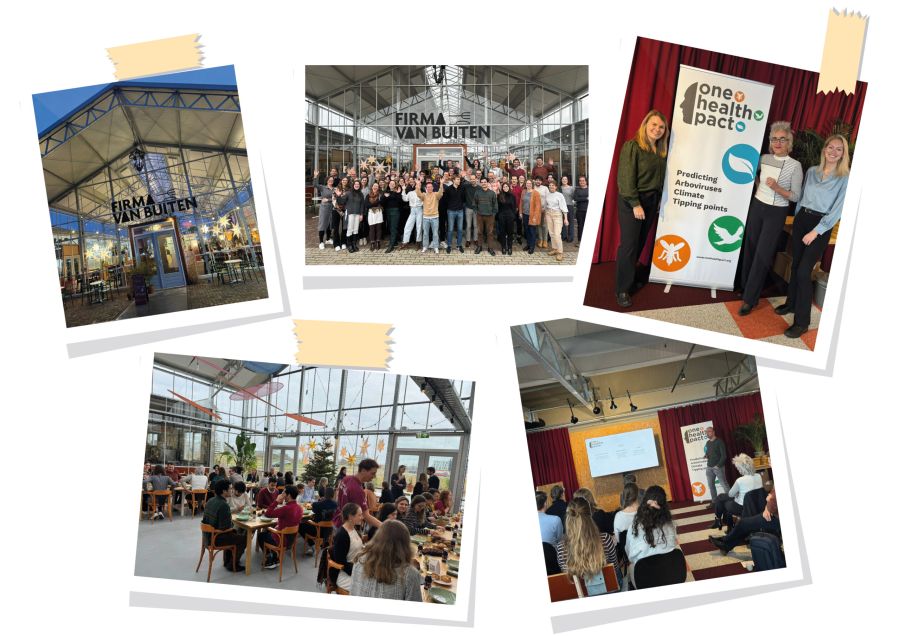
On Friday, December 15th, the One Health PACT annual meeting took place in Delft. The event featured presentations from the PIs representing each pillar, offering updates on completed work and outlining ongoing projects. Following this brief overview, the stage was turned over to the PhD candidates within each pillar, allowing for a more in-depth exploration of their ongoing research. A more detailed description of the PhD presentations can be found below.
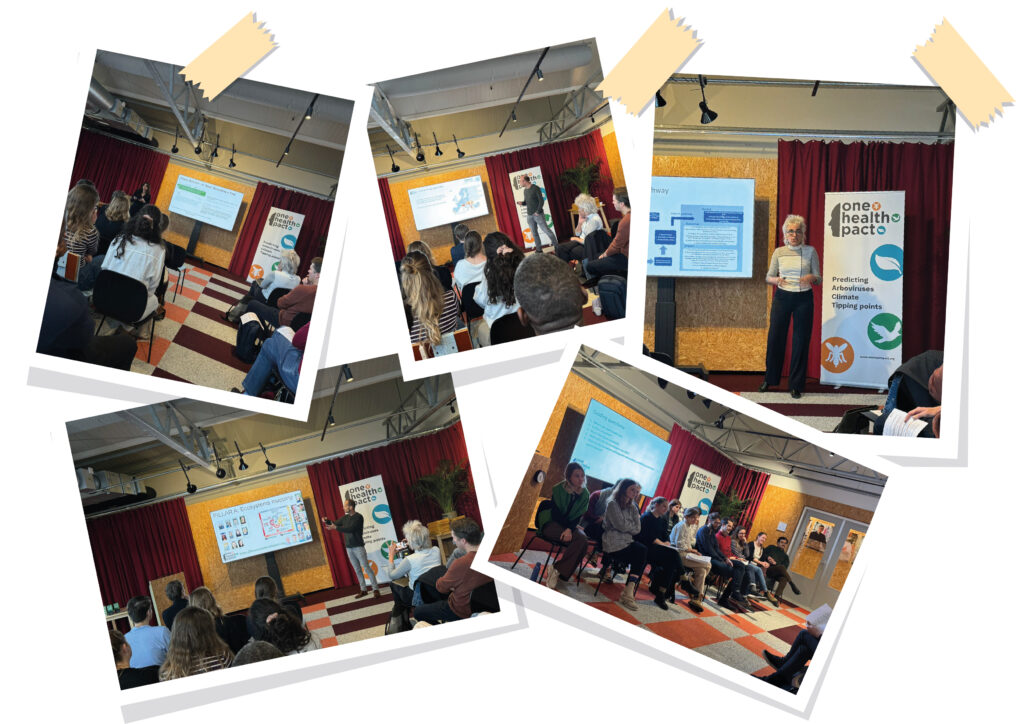
The day concluded with closing remarks from Stella Koppel, who attended the annual retreat on behalf of NWO, and some inspirational words from Marion Koopmans. Subsequently, the floor was once again given to the PhD candidates, this time for a simulated press conference addressing a Bluetongue outbreak scenario. Despite challenging questions from the PIs, the PhD candidates demonstrated resilience and expertise. The event concluded with refreshments, providing an opportunity for further discussions.
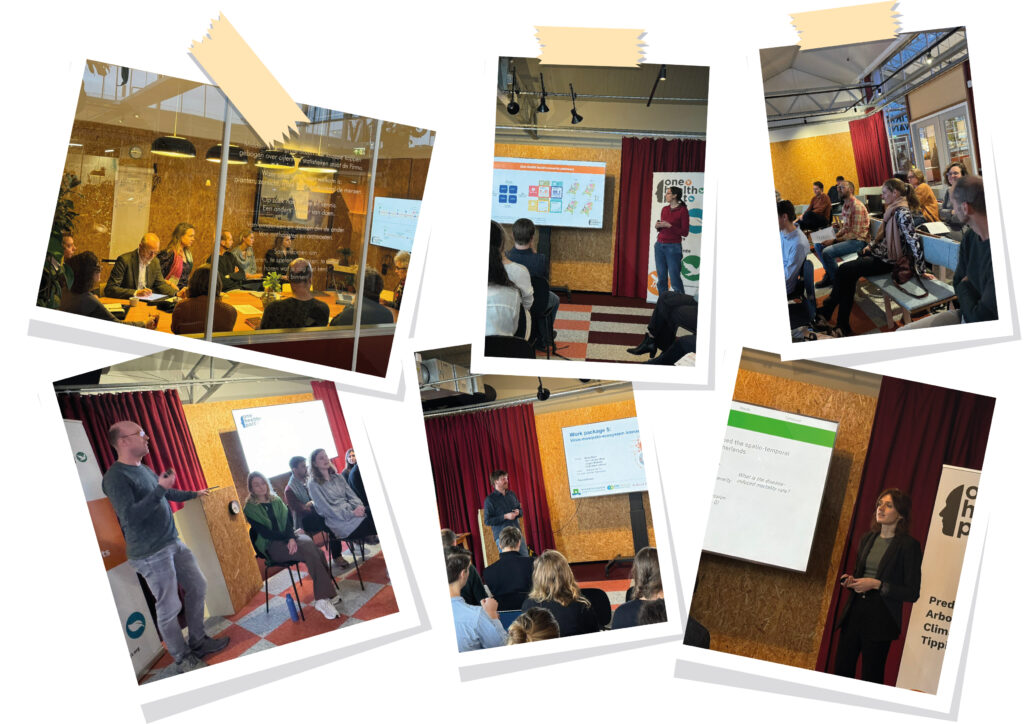
PhD updates presented during the annual meeting
Pillar A – Ecosystem mapping
Ayat Abourashed highlighted the launch of the Mosquito Alert app and its success in 2021, with the Netherlands breaking records (over 5,000 reports submitted in 3 days!). Ayat gave an update about what has happened since then and how she has incorporated citizen science into spatial risk models. If you want to know more about Ayats presentation take a look at this blog post on the Mosquito Alert website link
Tjomme van Mastrigt presented preliminary results of an integrated population model of a key avian host for the Usutu virus. By combining capture-mark recapture data, territory counts and nest success data, this model showed how the breeding population of Common blackbirds (Turdus merula) in the Netherlands suffered from considerable mortality during the 2016-2018 Usutu virus outbreak. This resulted in a marked population decline.
Pillar B – Forecasting and early detection
Louie Krol unfortunately couldn’t attend the annual meeting. On his behalf Martha Dellar presented. The main message of the presentation was that Culex pipiens s.l. spatiotemporal distribution can be explained by a combination of climatological and land use/cover related factors. Climatological factors set the possible bandwidth and land use/cover shapes the local distribution. Modifying landscapes might thus be a possible avenue to mitigate the effects of climate change on mosquito spatiotemporal distribution.
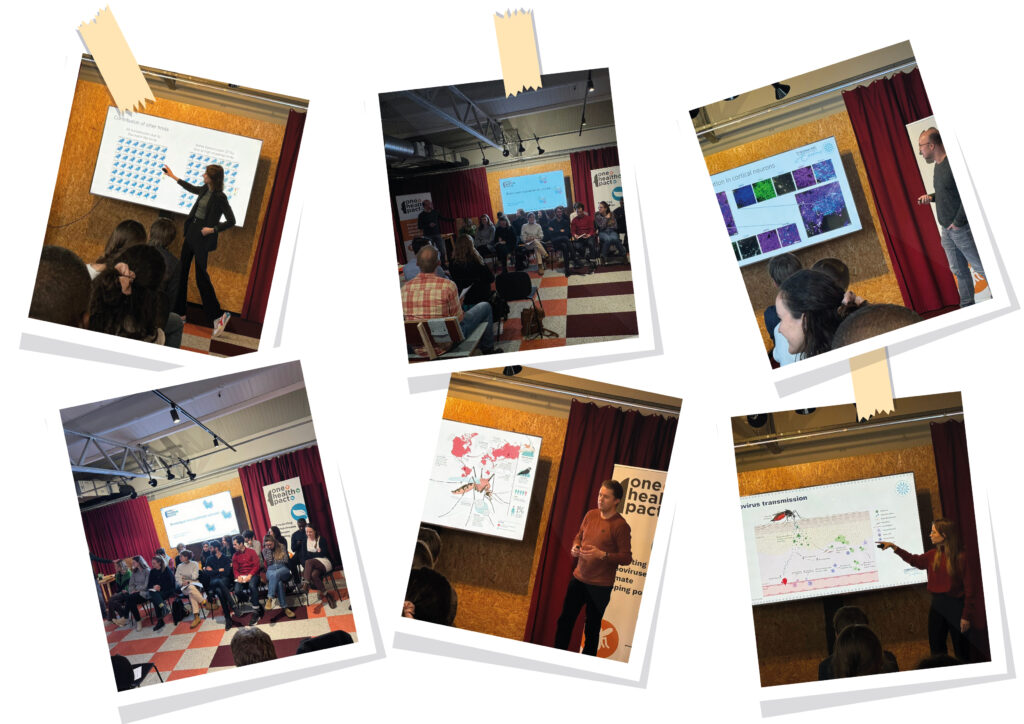
Mariken de Wit presented her work on the transmission modelling of Usutu virus in the Netherlands. She showed the different components of the model and explained how the model is calibrated to the various sources of surveillance data collected in the consortium. First results suggested that successful introduction of the virus in the South of the country was the main driver of the observed spatial pattern in emergence.
Pillar C – Impact and severity assessment
Imke Visser presented her work on the effects of mosquito saliva on permeability of different skin layers and blood vessels. She identified the role of a protease in this process. Her presentation resulted to a very inspirational discussion! If you want to know more about Imke’s presentation please contact Imke.
Eleanor Marshall’s presentation focused on the differential susceptibility of human motor neurons to infection with USUV vs WNV. She found that motor neurons cannot be infected with USUV due to induction of a robust anti-viral response which is not induced upon infection with WNV. This finding may gave key insights into the reduced severity and incidence of neurological disease caused by USUV compared to WNV.
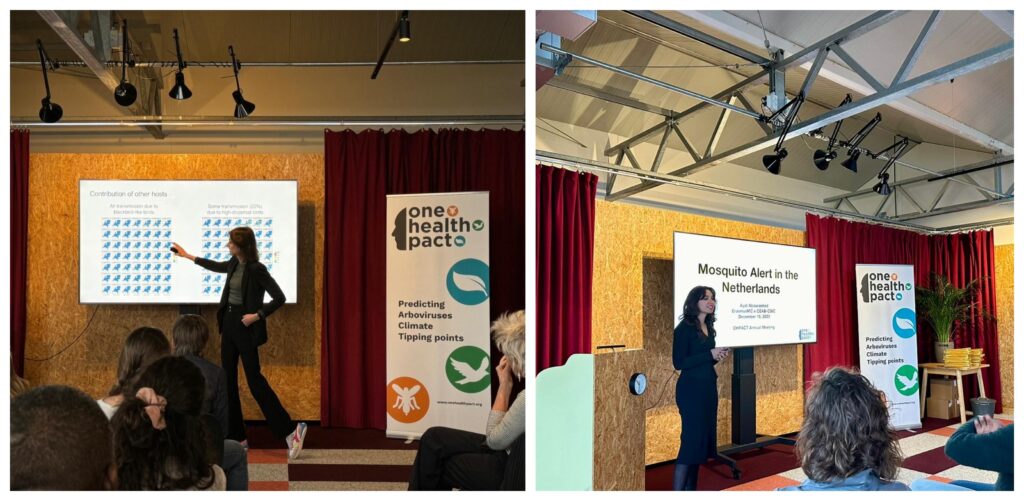
Pillar D – Interventions
Bijan Godarzi: gave a presentation about the lateral flow microarray immunoassay they are developing. He described the need for species-independent serological tools that can be used in the field and how they aim to address this by developing a species-independent lateral flow microarray immunoassay to detect and distinguish between WNV and USUV. Following optimization of the LMIA, the WNV and USUV LMIA results correlated well with “gold standard” WNV and USUV virus neutralization tests. In the next months he will use the developed LMIA to test bird tissue samples for the presence or absence of WNV and USUV NS1 antibodies. In collaboration with Jurrian and Henk, he will also assess how well the LMIA performs in a field setting.
Tom van der Most: gave an update on the intervention strategy of using insect-specific viruses to limit arbovirus transmission by mosquitoes. He evaluated the effect of Dutch isolates of Alphamesonivirus 1 and Negev virus on infection and transmission of West-Nile virus in laboratory Culex pipiens mosquitoes. He found that the proportion of WNV-infected mosquitoes was reduced with Negev virus, but the effect was visible at different timepoint, complicating the interpretation of these results.